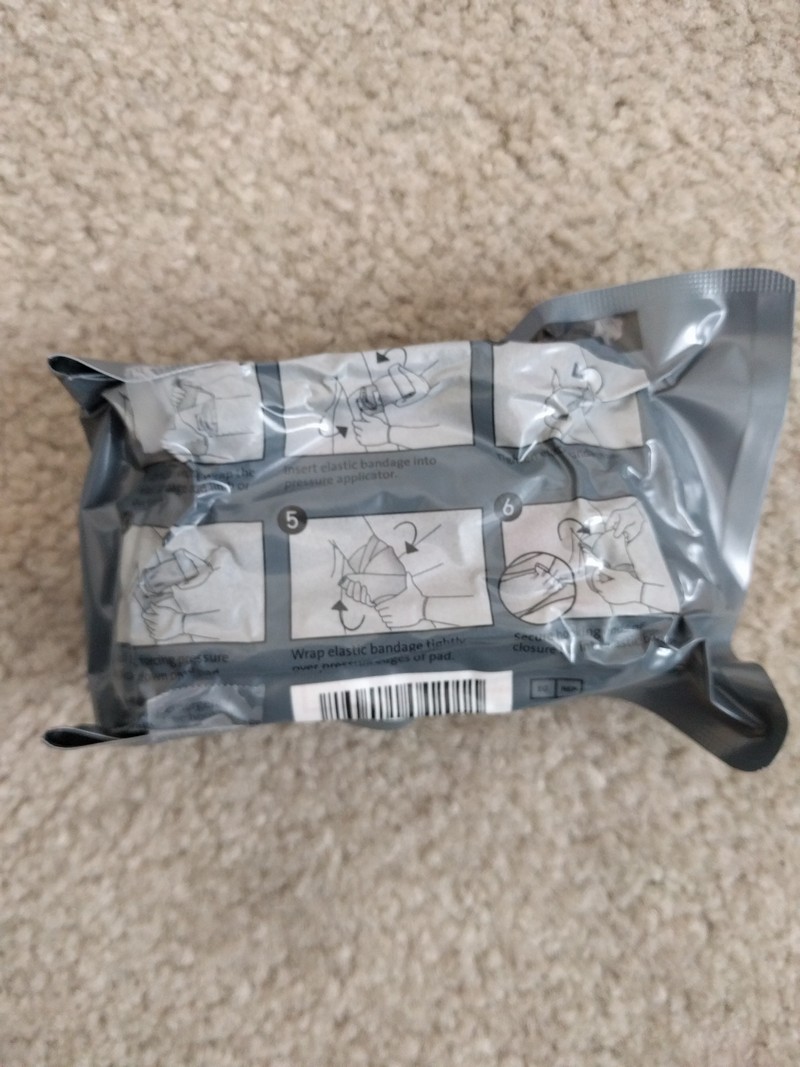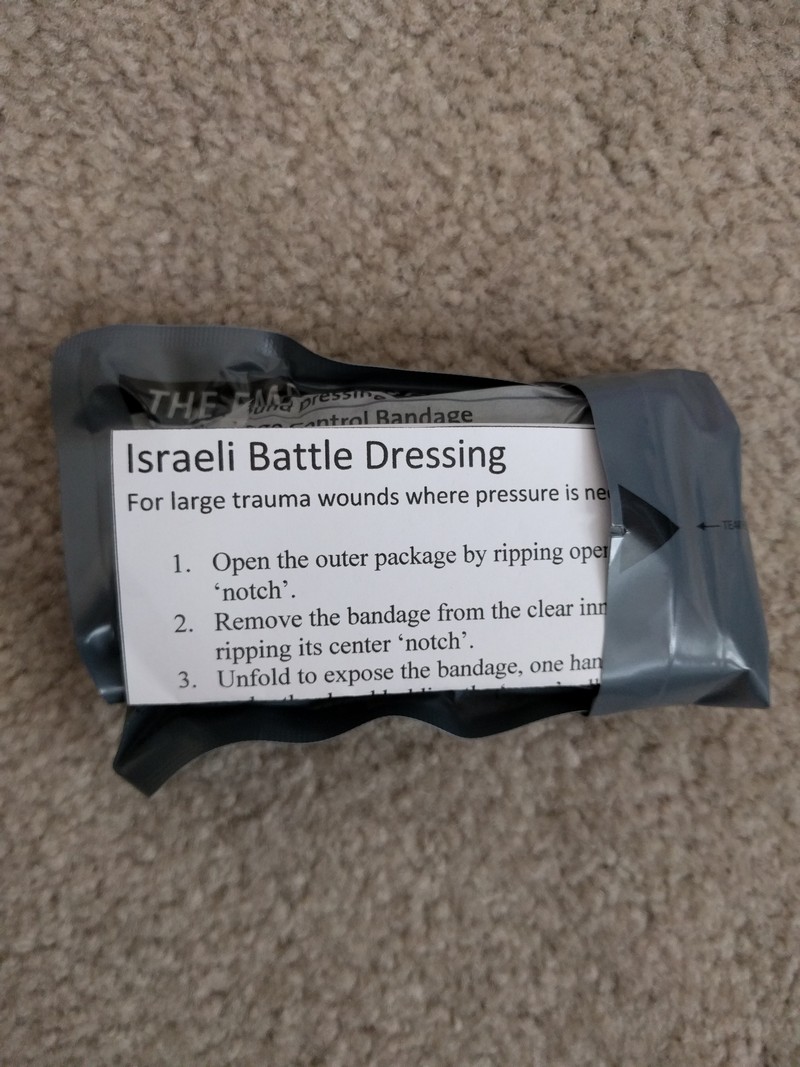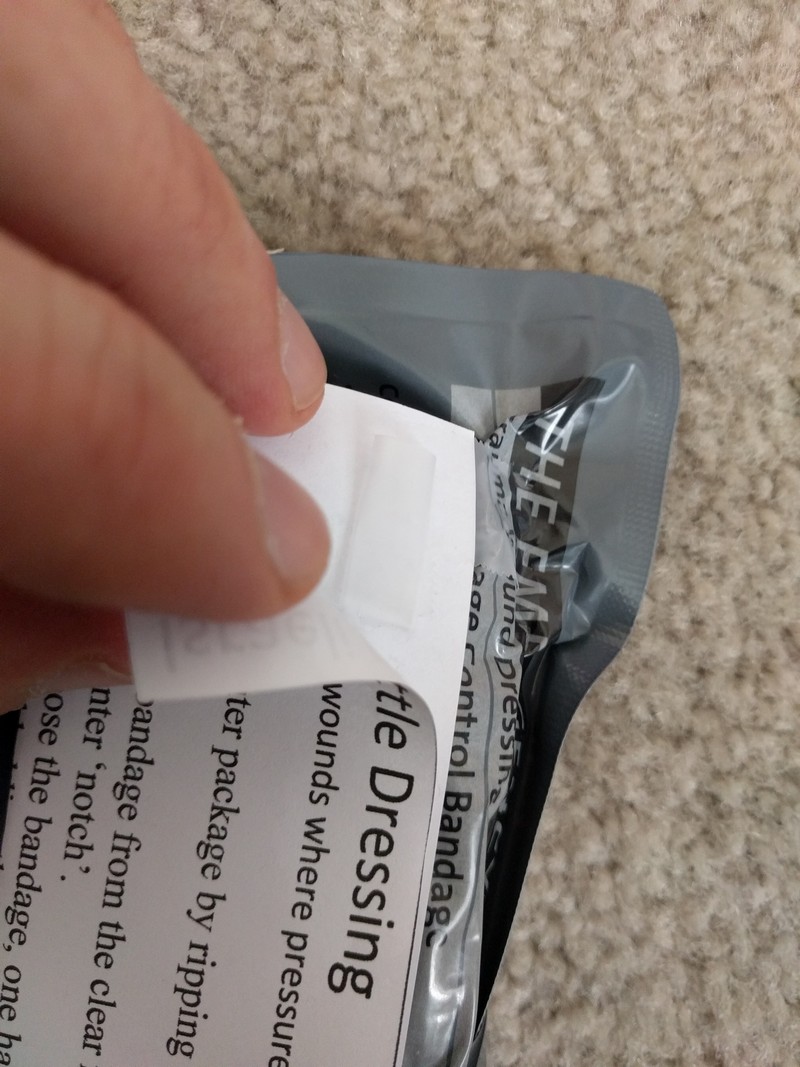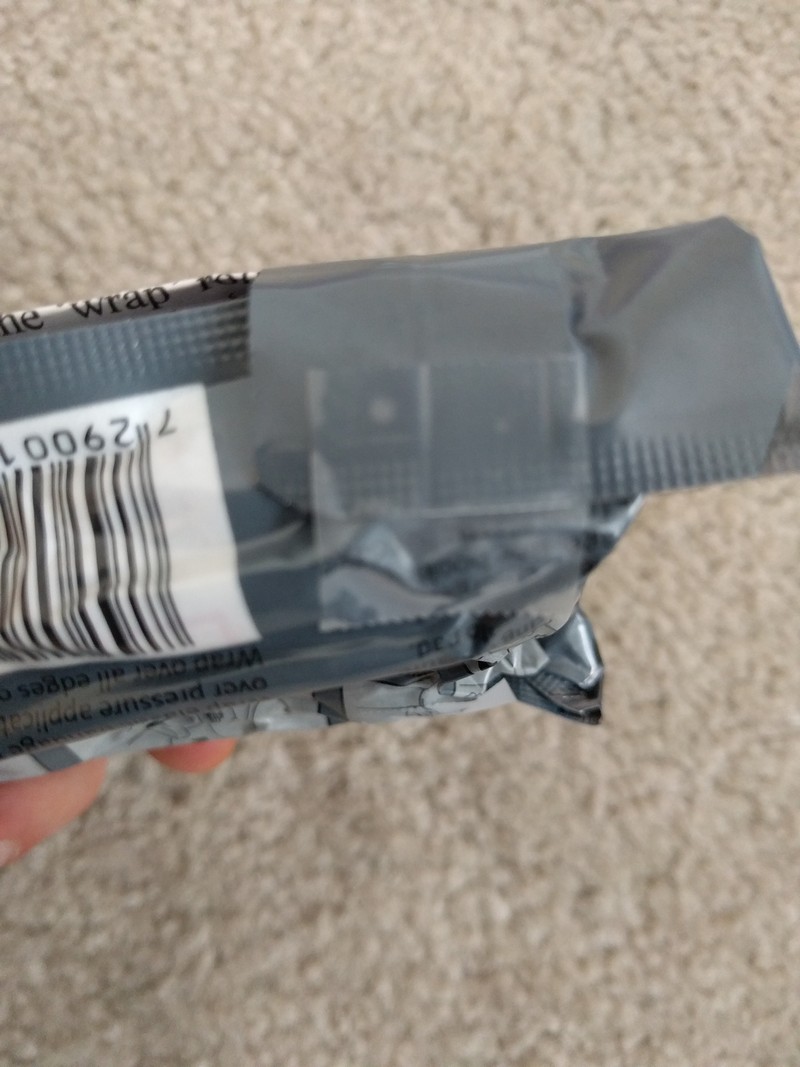A Sports Bag First Aid Kit
2018-08-27 15:38
Background
I recently got a bug up my butt about having a first aid kit in my karate bag. And, if I ever get back to it, my fencing bag.
Fortunately, I haven't seen too many injuries, partly because at my first dojo, Hudson Centers for the Martial Arts, our top rule is "Safety First". We did have an incident where a student's foot got cut on some glass left over from a party the space was rented to. They didn't clean up, we did, but missed this little sliver. There she is, bleeding, and another student says, "I'll get my first aid kit." He was a Boy Scout, so, yeah, "Be Prepared," and we were proud of him.
And I was a little embarrassed. Where was my kit?
I researched what others recommended, especially for the martial arts, and realized that an off-the-shelf kit wasn't going to satisfy me. Below is what I ended up with. Many items are bought in bulk. I recommend that several people in a club contribute to the cost, share the bulk items, then create their own kits by filling in the rest.
Here's a link to a Word doc with labels you can print and cut out.
Objectives
There are two competing realities for a first aid kit:
- It probably won't be needed more than once a year.
- When it is needed, it must be ready-to-go for anyone.
To me, this means the kit's items should be:
- Easy to identify
- Easy to open
- Easy to use
- Easy to reseal (unless one-use)
If instructions for an item aren't clear, print better ones on small paper, tape the paper using packing tape (poor man's lamination), and affix to the item.
For identification, if using a bottle or bag, print labels or write in clear, capital letters using a Sharpie. If necessary, replace the label with white, "laminated" paper.
Imagine you have to tell someone, "go to my karate bag, in the front left pocket there's a plastic First Aid Kit." Or what about, "In my bag, there's a First Aid kit with glucose tablets."
Keep in mind that you'll want to check and refresh the kit once a year.
Items
I've linked to the items I purchased.
Check at home! Don't buy it if you already have it!
- 1" Athletic Tape (1)
- 1" Bandaids (10)
- 3x3 or 4x4 Gauze Pads (2)
- Liquid bandage) (1)
- Ace-type wrap (1)
- Q-Tips (10)
- Nitril medium gloves (3 pair)
- Alcohol wipes (5)
- Aspirin low dose (36)
- Tylenol (12)
- Benadryl (12)
- Electrolyte powder (1 packet)
- Sugar or glucose (for diabetic) (1 roll)
- Small scissors (1)
- Tweezers (1)
- Small ziplock bags, buy at grocery store, something like this
- 3 dram pill bottles (2-3)
- Israeli Battle Dressing (optional)
Container
- Hard plastic, approx 8x6x3.
- Withstands abuse
- Stays closed
- Easy to label
A plastic pencil box like this one at Michael's is perfect.
Medicine
I found 3-dram plastic bottles to be the perfect size.
Label with:
- Brand Name
- Use, such as ("pain", "diabetic", "dehydration")
- Dosage
- Expiration Date
Other Items to Repackage
Ideally, use small, ziplock plastic bags.
- Nitrile gloves
- Q-Tips
- 1 inch heavy bandages
My Kit!
Various pictures showing the kit at various stages. The medicine list changed slightly based on some feedback. I substituted aspirin for ibuprofen.
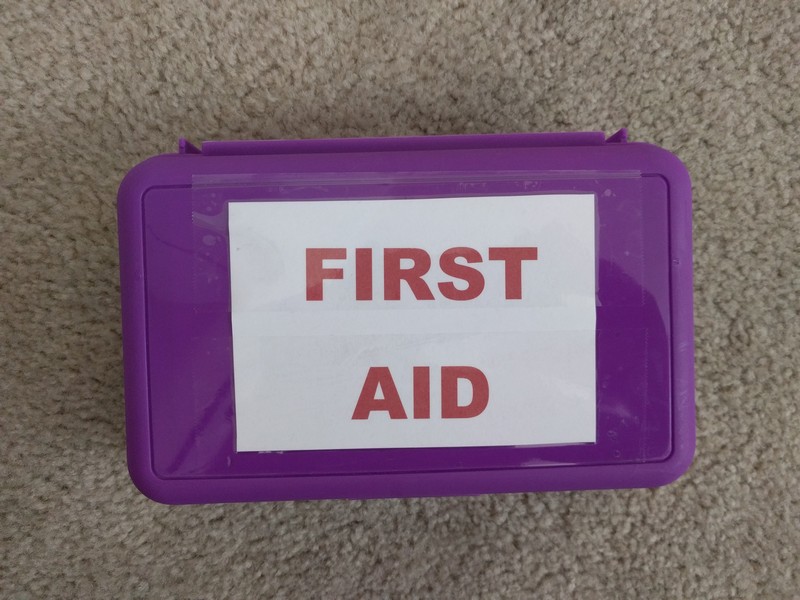
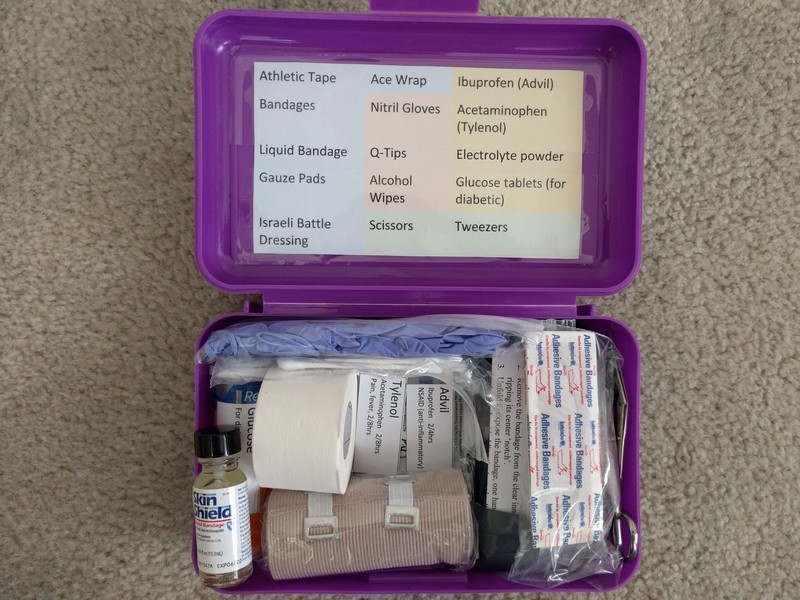
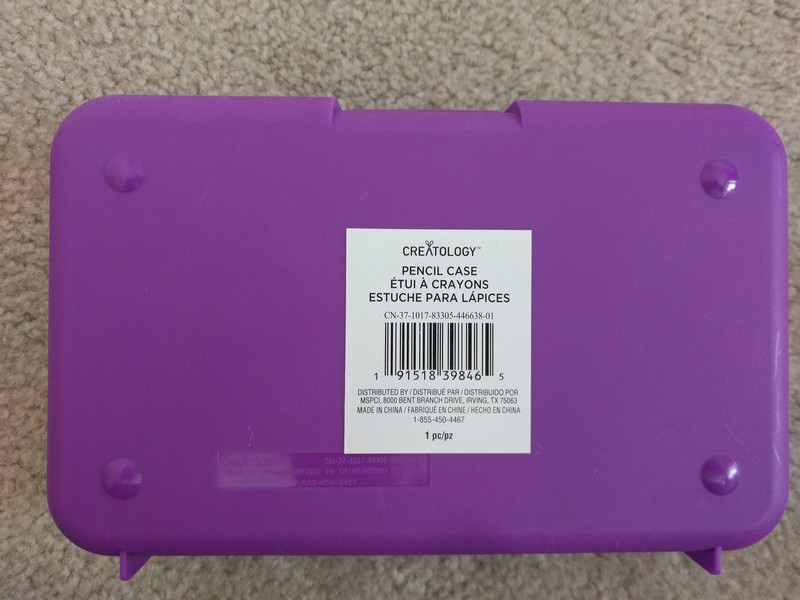
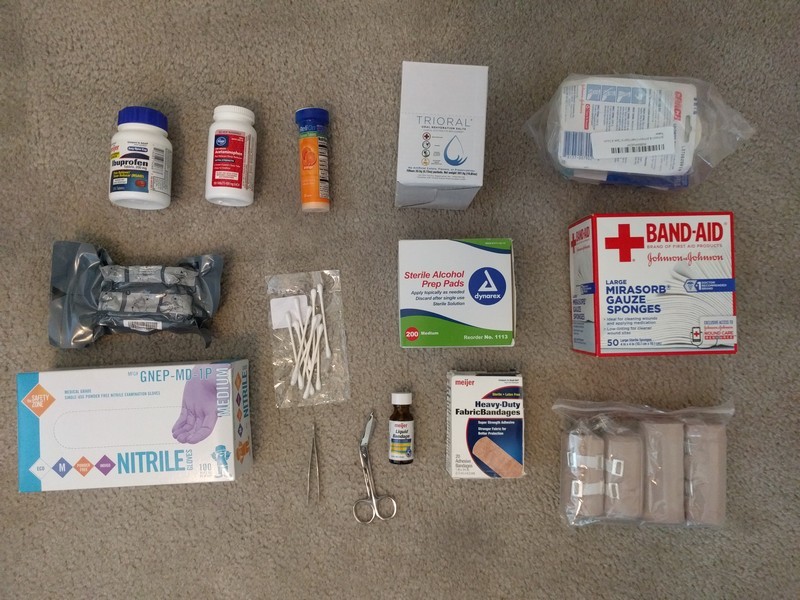
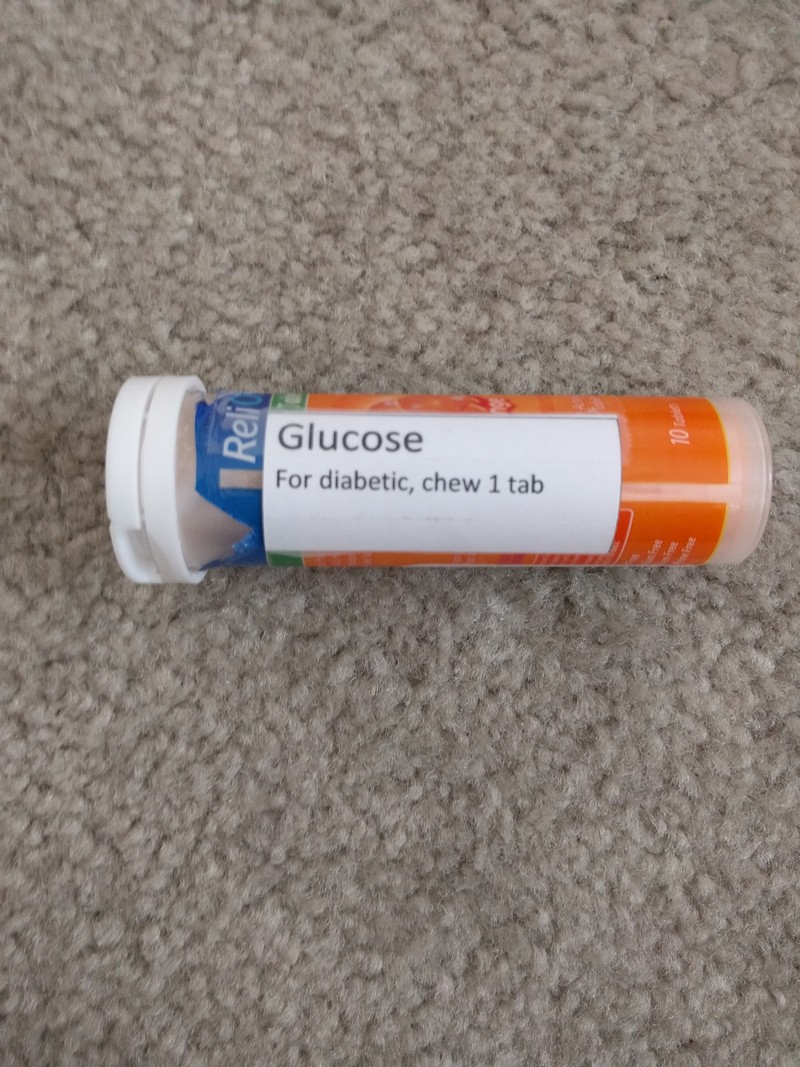
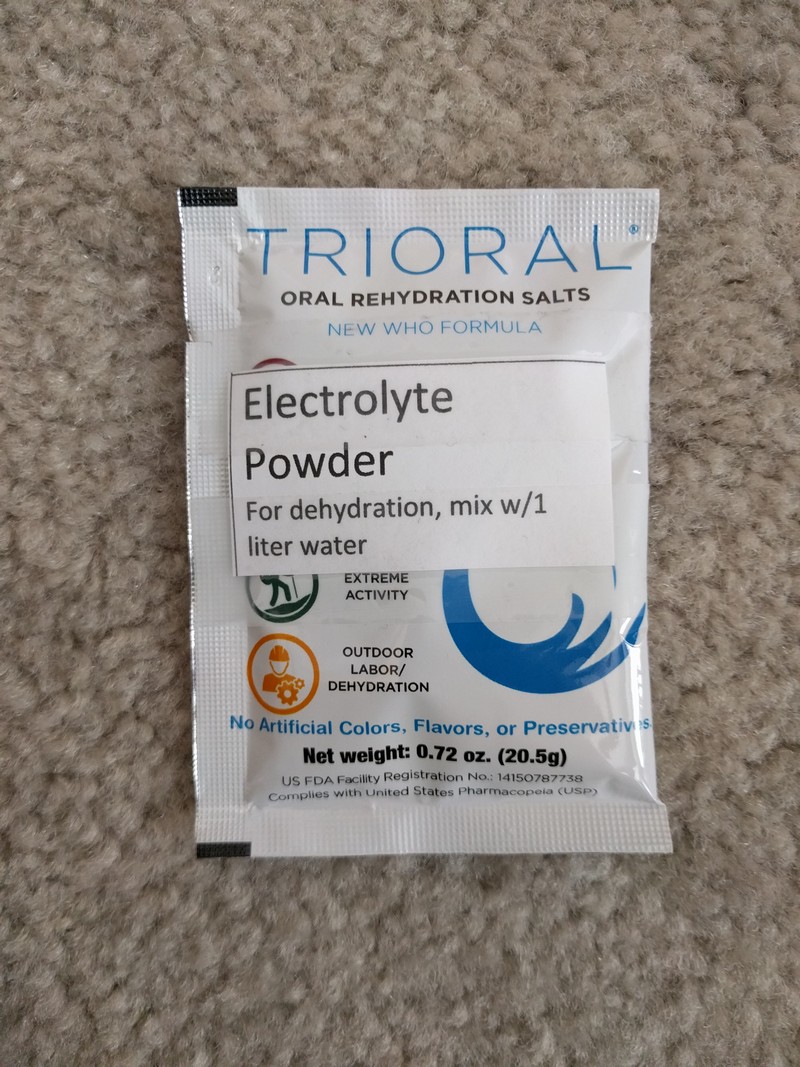
Optional
The Israeli bandage is a high-compression device used to help control severe bleeding. It is not an anti-coagulant. I taped the sides to make it fit better, without affecting opening it.
